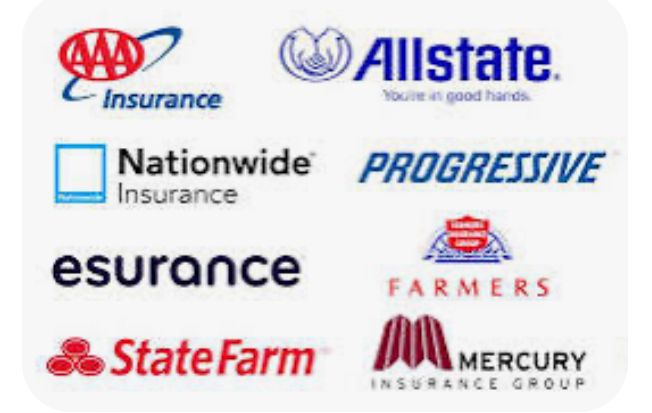Buying Auto Insurance for Dummies: What You Need to Know
Auto insurance is an essential part of the driving experience. It provides financial protection against accidents, damages, and liability claims, ensuring that both you and others are covered in case of a car crash or other accident. However, understanding the ins and outs of auto insurance can be overwhelming, given the various coverage options, policy limits, and legal requirements. In this blog, we’ll break down everything you need to know about auto insurance, from how it works to choosing the right coverage for your needs.
What Exactly Is Auto Insurance?
Auto insurance is a contract between you and an insurance company that provides financial protection in the event of an accident, theft, or other vehicle-related incidents. In exchange for paying a regular premium, the insurance company agrees to cover the costs associated with car accidents or damages, depending on the coverage you choose.
What Are The Different Types of Auto Insurance Coverage?
When shopping for auto insurance, you’ll encounter several types of coverage. Here’s a breakdown of the most common ones:
1. Liability Coverage
A. Bodily Injury Liability: Covers medical expenses for injuries you cause to others in an accident.
B. Property Damage Liability: Pays for damages you cause to someone else’s property, such as their car or house.
2. Collision Coverage: This pays for damage to your car resulting from a collision, regardless of who is at fault. Collision coverage is especially useful if your car is damaged in an accident with another vehicle or object (e.g., a tree or guardrail).
3. Comprehensive Coverage: protects your vehicle from non-collision incidents such as theft, vandalism, natural disasters, or damage from falling objects. It’s often required if you finance or lease your vehicle.
4. Personal Injury Protection (PIP): PIP covers medical expenses and lost wages for you and your passengers, regardless of who is at fault in an accident. It’s mandatory in some states and optional in others. In California, it’s known as Med Pay (medical payments).
5. Uninsured/Underinsured Motorist Coverage: This type of coverage kicks in when you’re involved in an accident with a driver who either doesn’t have insurance or doesn’t have enough to cover the damages. It helps pay for medical bills and repairs in such cases.
6. Gap Insurance: comes into play if your car is totaled or stolen and its value is less than what you owe on your auto loan. It covers the “gap” between the actual cash value of your car and the amount still owed to the lender.
Factors That Affect Your Auto Insurance Premium
Several factors influence how much you’ll pay for auto insurance. These include:
1. Driving Record: If you have a clean driving record, you’re likely to pay lower premiums. However, accidents, traffic violations, and DUIs can increase your insurance rates.
2. Age and Experience: Younger, less experienced drivers usually pay more for insurance because they are statistically more likely to be involved in accidents.
3. Vehicle Type: The make, model, and year of your car affect your premium. High-performance or luxury cars typically cost more to insure.
4. Location: Where you live plays a role in your insurance rates. Urban areas with higher rates of accidents and theft tend to have higher premiums.
5. Credit Score: In many states, your credit score can influence your insurance rates. A higher credit score may lead to lower premiums, while a lower score could result in higher costs.
6. Deductible: The deductible is the amount you pay out of pocket before your insurance kicks in. A higher deductible generally means lower premiums, but you’ll pay more if you file a claim. We recommend the highest deductible allowable, as this will result in a lower monthly premium. Within a few years, the savings will more than add up to what the deductible is in case of accident that YOU caused.
How to Choose the Right Auto Insurance
When selecting auto insurance, consider the following tips to ensure you get the best policy for your needs:
1. Understand Your State’s Minimum Requirements: Every state has its own minimum insurance requirements. Make sure you understand what’s mandatory in your state, but keep in mind that the minimum coverage may not be enough to fully protect you.
2. Assess Your Needs: Think about how much coverage you need based on your driving habits, the value of your car, and your financial situation. If you have a newer car or a loan, comprehensive and collision coverage may be essential.
3. Shop Around: Don’t settle for the first quote you receive. Get quotes from multiple insurers to compare prices and coverage options. Many insurance companies offer discounts for safe driving, bundling policies, or installing safety features in your vehicle.
4. Review Your Policy Annually Or Every Few Years: Life changes, and so do your insurance needs. Review your policy each year to ensure you’re not paying for unnecessary coverage or missing out on potential discounts.
Auto insurance is more than just a legal requirement; it’s a critical tool that provides peace of mind and financial protection. By understanding the different types of coverage, factors that influence premiums, and tips for choosing the right policy, you’ll be better equipped to make informed decisions about your auto insurance. Remember, the best auto insurance policy is one that fits your personal needs and budget, offering adequate protection without unnecessary costs.
So, take the time to research, compare policies, and customize your coverage to ensure you’re fully protected on the road.
Be safe, and enjoy the road!

